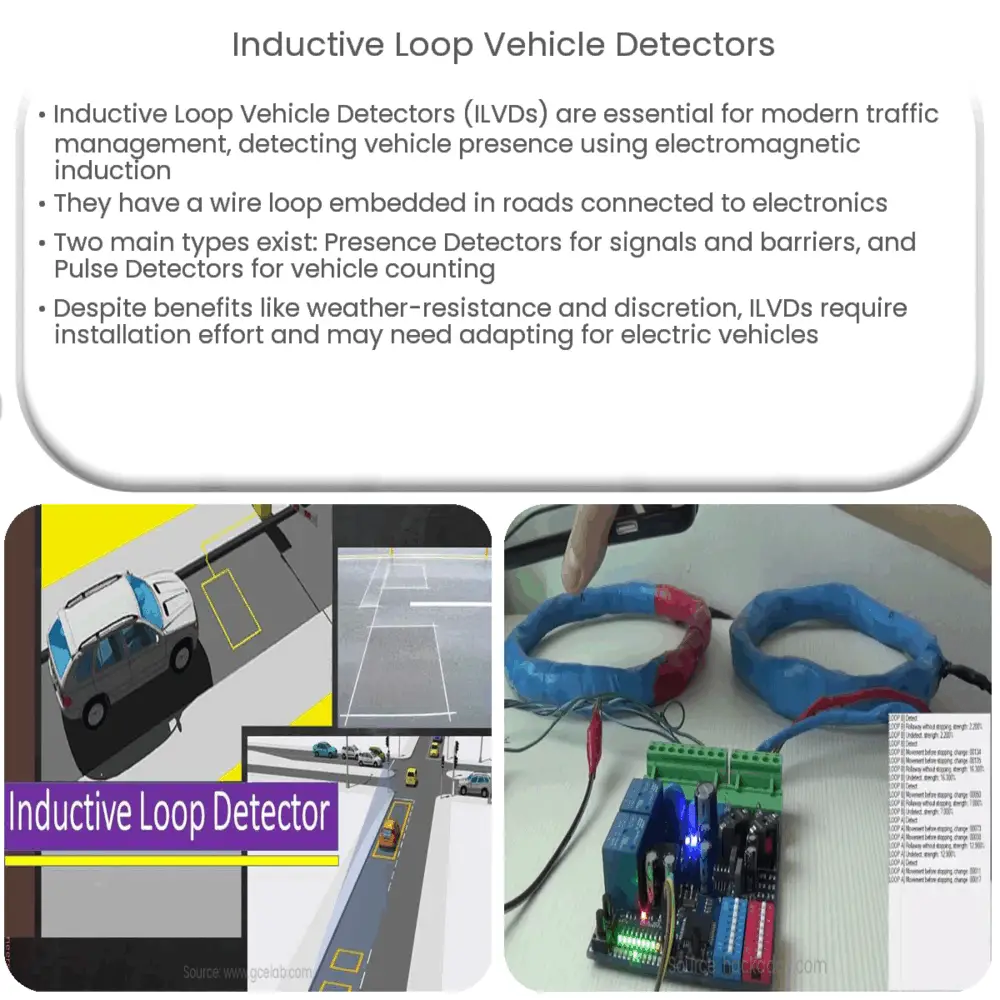Explore the world of Inductive Loop Vehicle Detectors (ILVDs), their functionality, benefits, limitations, and the promising future with AI integration.

Introduction to Inductive Loop Vehicle Detectors
Inductive Loop Vehicle Detectors (ILVDs) are vital components of modern traffic management systems. They serve a crucial role in monitoring and managing the flow of vehicles on roads and at intersections. Their operation, though simple in concept, requires a precise combination of electrical and civil engineering knowledge.
How They Work
The primary function of an Inductive Loop Vehicle Detector is to detect the presence or absence of a vehicle, and this is accomplished through an interesting physical principle – electromagnetic induction. This principle states that a change in the magnetic field within a coil of wire induces an electrical current in the wire.
- Physical Layout: The detector comprises a loop of wire embedded into the road surface and connected to a box housing the electronics. This wire loop serves as the inductive coil and is usually rectangular, although other shapes may also be used depending on the circumstances.
- Detection Mechanism: When a vehicle, especially one made of a material like steel that can easily be magnetized, moves over or stops over the loop, it changes the magnetic field within the loop. This change induces a current, which is detected by the electronics in the box. The system then triggers an output, such as changing a traffic light or counting the vehicle.
Types of ILVDs
There are two main types of Inductive Loop Vehicle Detectors, which differ based on the information they provide:
- Presence Detectors: These types of detectors provide information about whether or not there is a vehicle over the loop. They are often used at traffic lights or in parking lots to change signals or open barriers when a vehicle is detected.
- Pulse Detectors: Pulse detectors generate an output each time a vehicle passes over the loop. They are usually used on highways or at the entrances and exits of large parking lots for counting vehicles.
Understanding the intricate operation and effective applications of Inductive Loop Vehicle Detectors is a vital part of creating efficient traffic systems. The next part of this article will further delve into the benefits and limitations of ILVDs, and how advancements in technology may shape their future applications.
Benefits and Limitations of ILVDs
The use of Inductive Loop Vehicle Detectors presents several benefits. First, their ability to function irrespective of weather conditions is a considerable advantage, as other sensors, such as cameras, may struggle in fog, heavy rain, or snow. Also, ILVDs are inherently discreet; they are almost invisible once installed, reducing the risk of vandalism. Finally, ILVDs are known for their robustness and longevity, often remaining functional for several years.
Despite these benefits, ILVDs have their limitations. Installation can be time-consuming, requiring a slot to be cut into the road, the loop to be installed, and then the slot to be sealed again. Moreover, although ILVDs are generally robust, they can be susceptible to wear and tear due to the heavy loads they are subjected to, requiring occasional maintenance or replacement.
Future of ILVDs
As technology evolves, so does the future of Inductive Loop Vehicle Detectors. New advancements in artificial intelligence and machine learning can augment the capabilities of ILVDs. For example, incorporating predictive algorithms can enable traffic management systems to anticipate and manage traffic flow even more efficiently. Furthermore, as electric vehicles become more common, adaptations may need to be made to ensure these vehicles, often lighter with less metal, can still be effectively detected by the ILVDs.
- Integrating AI: By integrating AI and machine learning, ILVDs could potentially identify different types of vehicles, allowing more nuanced traffic management.
- Adapting to Electric Vehicles: With the rise of electric vehicles, the design and sensitivity of ILVDs may need to be adapted to ensure these vehicles can be reliably detected.
Conclusion
In conclusion, Inductive Loop Vehicle Detectors play a vital role in our transportation systems, providing robust and reliable vehicle detection in a variety of weather conditions. Although they have limitations and face challenges with emerging technology, such as electric vehicles, the adaptability and upgrade potential of ILVDs ensure that they will remain an integral part of our traffic management systems for years to come. As we drive into the future, the fusion of traditional technologies like ILVDs with modern advancements in AI and machine learning promises a more efficient, safe, and sophisticated transportation landscape.

